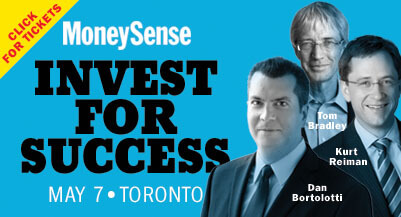Switching from e-Series funds to ETFs
Can’t wait to “graduate” to ETFs? Think twice before you make the leap
Advertisement
Can’t wait to “graduate” to ETFs? Think twice before you make the leap
 Invest for Success with MoneySense in Toronto
Invest for Success with MoneySense in TorontoShare this article Share on Facebook Share on Twitter Share on Linkedin Share on Reddit Share on Email